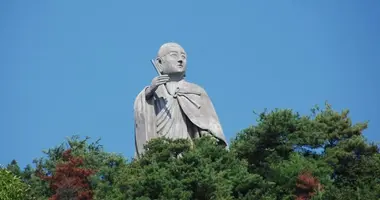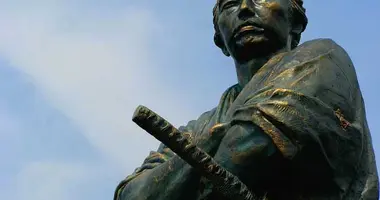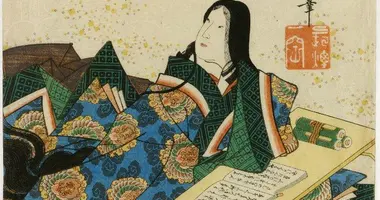Kamakura Period Japan History
- Published on : 24/04/2024
- by : Japan Experience
- Youtube
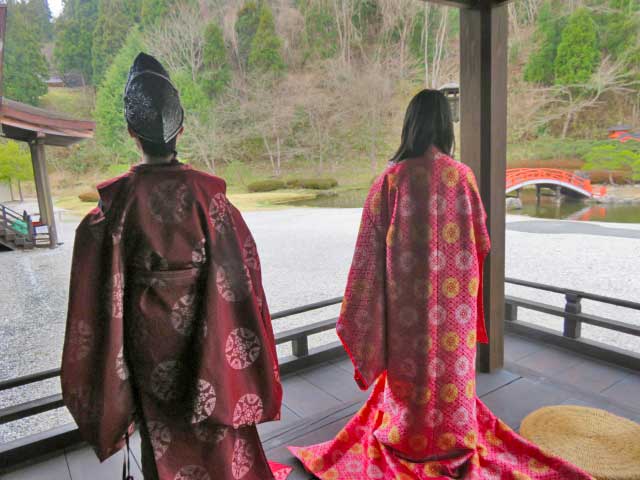
The Kamakura period (1185-1333) marked a major shift in Japan's political and social structure. It saw the rise of the warrior class (samurai), the establishment of feudalism, and the governance by the Kamakura shogunate. This era ushered in profound changes in Japan's politics, culture, economy, and religion that would shape the country for centuries to come. Let's explore the key elements that defined the Kamakura period, from the political upheavals and cultural developments to the Mongol invasions and the period's enduring legacy.
Rise of the Kamakura Shogunate Under Minamoto no Yoritomo
The Kamakura period began in 1185 when Kamakura-based warrior Minamoto no Yoritomo defeated the Taira clan in the Genpei War. In 1192, Yoritomo was appointed shogun by the emperor, establishing the Kamakura shogunate, Japan's first military government. As shogun, Yoritomo held the real power while the emperor became a mere figurehead. Yoritomo skillfully navigated the political landscape, consolidating his authority and setting the stage for the rise of the samurai class.
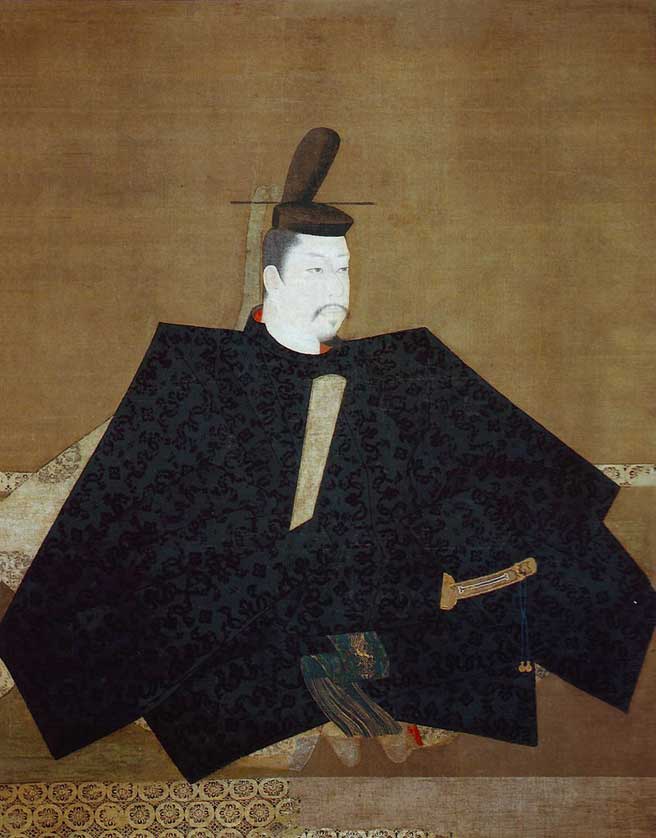
Minamoto no Yoritomo
Transition of Power to the Hōjō Clan Regents
After Yoritomo's death in 1199, the Hōjō clan, led by Yoritomo's widow Hōjō Masako and her father Hōjō Tokimasa, seized power. They established a regency system where Hōjō clan members ruled as shikken (regents) behind puppet shoguns. The Hōjō regents, particularly Hōjō Yasutoki and Hōjō Tokiyori, further strengthened the shogunate's authority, effectively sidelining the imperial court in Kyoto. This unique power structure characterized much of the Kamakura period.
Kamakura's Political and Administrative System
The Kamakura shogunate implemented significant administrative reforms to consolidate its control over the country. It established the Mandokoro (administrative board), Monchūjo (judiciary), and Samurai-dokoro (military affairs) to handle various aspects of governance. The shogunate also appointed jitō (estate stewards) and shugo (provincial constables) to manage local administration and maintain order. These reforms laid the foundation for a more centralized feudal system.
Economic and Agricultural Developments During the Kamakura Period
The Kamakura period witnessed notable economic and agricultural advancements. Improved farming techniques, such as double-cropping and better irrigation, led to increased agricultural productivity. The rise of trade guilds (za) and the expansion of commerce contributed to urban growth. Kamakura, as the shogunate's capital, flourished as a center of economic activity. However, the period also saw the emergence of a widening gap between the wealthy and the poor.
Emergence and Influence of New Buddhist Schools
Buddhism underwent significant transformations during the Kamakura period, with the emergence of new schools that had a profound impact on Japanese society. The Pure Land (Jōdo) school, founded by Hōnen, and the True Pure Land (Jōdo Shinshū) school, established by Shinran, gained widespread popularity among the masses. These schools emphasized faith and devotion over complex rituals, making Buddhism more accessible to ordinary people. Zen Buddhism, introduced by Eisai and Dōgen, also gained a strong foothold, particularly among the samurai class, shaping their aesthetics and way of life.
The Mongol Invasions and Their Impact
The Kamakura period faced a major external threat in the form of Mongol invasions in 1274 and 1281. Kublai Khan, the Mongol emperor, demanded that Japan submit to Mongol rule, but the Kamakura shogunate refused. The Mongol forces launched two massive invasions, but both attempts were thwarted by fierce Japanese resistance and the fortuitous intervention of typhoons, known as kamikaze (divine winds). Although victorious, the invasions strained Japan's economy and exposed the shogunate's vulnerabilities.

The Mongol Invasion as shown in a contemporary print with samurai boarding the Mongol ships
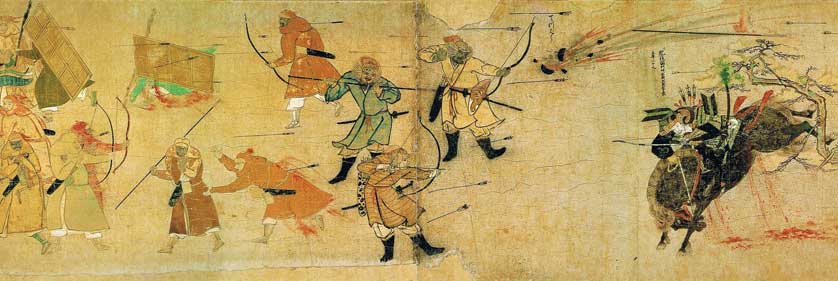
The Mongol Invasion in a contemporary print
Decline of the Kamakura Shogunate and Rise of the Ashikaga
The Kamakura shogunate's decline began in the early 14th century due to various factors, including internal power struggles, economic strains, and the growing dissatisfaction among the samurai. In 1333, Emperor Go-Daigo launched a rebellion against the shogunate, known as the Kenmu Restoration, seeking to restore imperial power. Although initially successful, the rebellion was short-lived. Ashikaga Takauji, a powerful samurai, turned against Go-Daigo and established the Ashikaga shogunate in 1336, marking the end of the Kamakura periodand the beginning of the Muromachi period.
The Kamakura period was a transformative era in Japanese history that saw the rise of the samurai class, the establishment of feudalism, and significant cultural and religious developments. Its legacy endures in the political, social, and artistic traditions that continue to shape Japan to this day. Read more articles on Japanese history to further explore the fascinating epochs that have molded Japan's unique identity.
For those interested in delving deeper into the Kamakura period and early Japanese history, here are some recommended books:
- The Samurai by Stephen Turnbull
- Kamakura: Fact and Legend by Iso Mutsu
- The World of the Shining Prince: Court Life in Ancient Japan by Ivan Morris
- Zen and Japanese Culture by D.T. Suzuki
